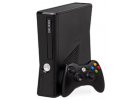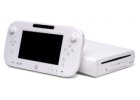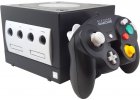The Nintendo GameCube offered the following features and functions:
Compact design: the GameCube had a unique cube design that was small, lightweight, and easily portable. Its dimensions were only 15 x 15 x 11 cm, making it one of the smallest consoles on the market.
Optical discs: Unlike its predecessors, which used cartridges, the GameCube used miniature optical discs (8 cm) as the medium for games. These discs could store up to 1.5 GB of data, allowing developers to create large-scale games with better graphics and sound.
Hardware: The GameCube was equipped with a powerful IBM PowerPC Gekko multi-core processor and an ATI Flipper graphics processor, which allowed games to run at high resolutions and with advanced graphical effects.
Controller: The GameCube controller was ergonomically designed with a customized button layout that included analog joysticks, A, B, X, Y, trigger and C-stick buttons. Its design was very popular, and the controller remained popular in subsequent generations of Nintendo consoles.
Game compatibility: the GameCube supported a wide variety of games across genres, including action, adventure, sports, racing, and puzzle games. Some of the most popular games for this console included The Legend of Zelda: The Wind Waker, Super Mario Sunshine, Metroid Prime and Super Smash Bros. Melee.
Accessories: the GameCube supported a variety of accessories such as memory cards for storing game positions, WaveBird wireless controllers, steering wheels for racing games, and a Game Boy Advance adapter that allowed players to play Game Boy Advance games on a television screen. It was also possible to connect up to four controllers for multiplayer gaming.
Although the GameCube was not primarily aimed at online play, an additional network adapter could be purchased that allowed the console to connect to the Internet and play selected games online or on a local network. However, online gaming was not as prevalent on the GameCube as it was on competing consoles such as the PlayStation 2 or Xbox.
Backwards compatibility: the GameCube was not backwards compatible with games for the previous console, the Nintendo 64. However, some games for the GameCube were later compatible with the Wii console, which was backwards compatible with most GameCube games and accessories.
Although the GameCube did not achieve the commercial success of the PlayStation 2 or Xbox, it still gained a loyal fan base and some of its games are considered classic and memorable. The GameCube was an important step in the evolution of Nintendo's game consoles, and its controller and some of its games have influenced subsequent generations of consoles such as the Wii and Wii U.





















































